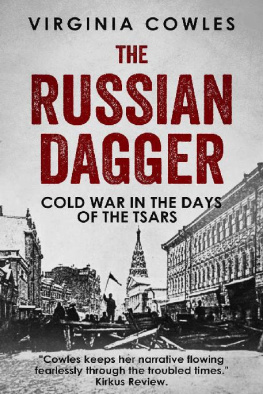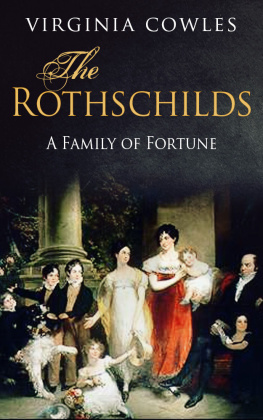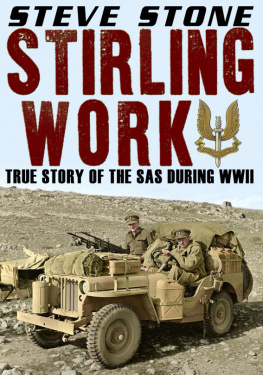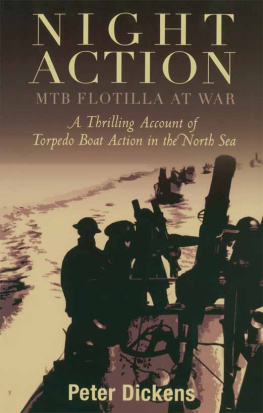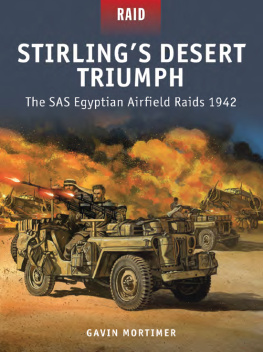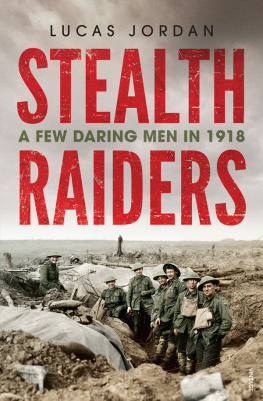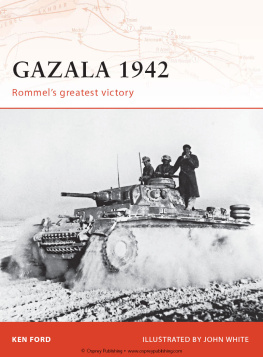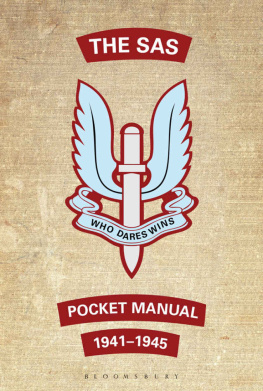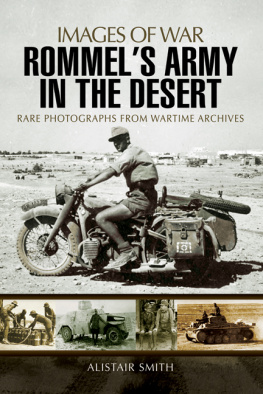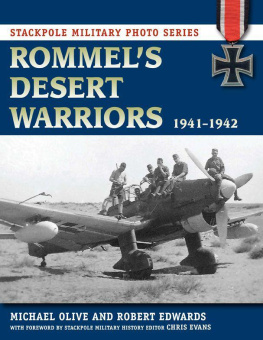
David Stirling
THE PHANTOM MAJOR
The Story of David Stirling and the S.A.S. Regiment
VIRGINIA COWLES
First published in Great Britain in 1958 by William Collins & Sons Co Ltd and reprinted in this format in 2010, 2015 and 2016 by
PEN & SWORD MILITARY
An imprint of
Pen & Sword Books Ltd
47 Church Street
Barnsley, South Yorkshire
S70 2AS
Copyright Virginia Cowles, 1958, 2010, 2015, 2016
ISBN 978 1 84884 386 8
eISBN 978 1 84884 964 8
Mobi ISBN 978 1 84884 965 5
The right of Virginia Cowles to be identified as Author of this work has been asserted by her in accordance with the Copyright, Designs and Patents Act 1988.
A CIP catalogue record for this book is available from the British Library
All rights reserved. No part of this book may be reproduced or transmitted in any form or by any means, electronic or mechanical including photocopying, recording or by any information storage and retrieval system, without permission from the Publisher in writing.
Pen & Sword Books Ltd incorporates the Imprints of Aviation, Atlas, Family History, Fiction, Maritime, Military, Discovery, Politics, History, Archaeology, Select, Wharncliffe Local History, Wharncliffe True Crime, Military Classics, Wharncliffe Transport, Leo Cooper, The Praetorian Press, Remember When, Seaforth Publishing and Frontline Publishing.
For a complete list of Pen & Sword titles please contact
PEN & SWORD BOOKS LIMITED
47 Church Street, Barnsley, South Yorkshire, S70 2AS, England
E-mail:
Website: www.pen-and-sword.co.uk
ACKNOWLEDGMENTS
Needless to say the S.A.S. did not keep detailed records of their operations in the Western Desert. Most of the information in this book has been gathered from eyewitness accounts which have involved much painful searching of memory. Dates and names have been checked, as far as possible, through the few diaries that exist.
I am grateful to Colonel David Stirling who told me all that he could remember, and racked his brain to try and place the details of the raids in their correct chronological order.
I am also grateful to Mr. Alexander Scratchley for putting me in touch with many former members of the S.A.S., and I would like to thank Mr. Gordon Alston, Major Michael Sadler, Mr. Stephen Hastings, Brigadier Vivian Street, Brigadier Sir Fitzroy Maclean, Mr. Peter Oldfield, Colonel David Sutherland, Colonel David Lloyd-Owen, Major Carol Mather, Major Cooper, Captain Hillman, Captain Riley, Lieutenant Timpson and Sergeants Du Vivier, Bennett, Seekings and Lilley for letting me see and use their private papers and diaries, or for giving me first-hand accounts of the raids I have described.
It may be interesting to the reader to know that many of the private reports were written not long after the war ended, at Colonel Stirlings request, for his own files. Others were written to give me the necessary information in compiling this book.
M. Augustin Jordan, of the French Foreign Office, supplied me with a detailed description of the raids which he led in June, July and December 1942; and gave me an account of the expedition to Crete led by Colonel Berge, who is now head of the French helicopter forces.
I have also to thank Generals Reid, Hackett, Sir John Marriott, Sir Robert Laycock for providing me with background information, and Mr. Douglas Mayne who sent me the scrapbook assembled by his brother Paddy.
Except for short excerpts to which acknowledgment is given in footnotes, none of the material quoted in this book has been published before.
19 Chester Square, Virginia Cowles
London, S.W. I January, 1958
LIST OF MAPS
Area of Operations: November 1941January 1943
From Jalo to the coast: December 1941January 1942
From Jalo and Siwa to Bouerat and Benghazi: Spring 1942
Route taken to establish base for raiding: July 1942
KabritKufraBenghazi: September 1942
Sectors for A and B Squadrons: November December 1942
Through the Gabes Gap en route to First Army: January 1943

The section of the cost along which Stirlings S.A.S operated between November 1941 and January 1943
CHAPTER ONE
THE BEGINNING
I T WAS nearly a week before the German High Command in the Western Desert became aware that the notorious British soldier, whom their radio referred to as the phantom major because of his persistent night raids behind their lines, had at last fallen into their hands.
It was enough of an event for Field-Marshal Rommel to write in his diary: During January, a number of our A.A. gunners succeeded in surprising a British column in Tunisia and captured the commander of the ist S.A.S. Regiment, Lieut.-Col. David Stirling. Insufficiently guarded, he managed to escape and made his way back to some Arabs, to whom he offered a reward if they would get him back to the British lines. But his bid must have been too small, for the Arabs, with their usual eye to business, offered him to us for eleven pounds of teaa bargain which we soon clinched. Thus the British lost the very able and adaptable commander of the desert group which had caused us more damage than any other British unit of equal strength.
This tribute to Stirlings leadership from such a distinguished soldier as Rommel was high praise; even so, it was an understatement. The truth was that Stirlings outfit had done more damage to the enemy than many units, not of equal, but of far greater strength. During the fourteen months that Stirling was in command his forces had destroyed over two hundred and fifty aircraft; they had blown up car parks and ammunition depots, hijacked lorries, mined roads, derailed trains, set fire to petrol dumps, and killed many times their own number. Not only had they struck fear into the hearts of German and Italian soldiers who should have felt themselves safe hundreds of miles behind their own front lines, but they had forced Rommel to divert troops to protect his rear, and at important times had disrupted his use of the coast road at night, which meant that his convoys were subjected to air attacks by day.
Stirling became almost a legend to the men who served him. They felt he led a charmed life; that there was no trap from which he could not fight his way, no occasion on which he could not outwit the enemy. He fascinated them, not only because of his daring and ingenuity, but because of his odd, paradoxical personality. If you met him in a Cairo restaurant you would be struck by his gentle voice and modest demeanour. Six feet six inches tall, he stooped slightly, as though apologising for his unusual height. His immaculate clothes and his perfect manners seemed to suggest another century, and perhaps you would be reminded of Sir Percy Blakeney, vague, soft-spoken, aristocratic and a bit of a dandy. But if you met him at a forward base in the desert Blakeney had become the Pimpernel; you were aware of a blackbearded giant with inexhaustible energy and a loving and extensive knowledge of explosives. The gentle voice was still there, but the vagueness was gone. The dark, shrewd eyes shone with a cold determination which had escaped your notice in Cairo.


